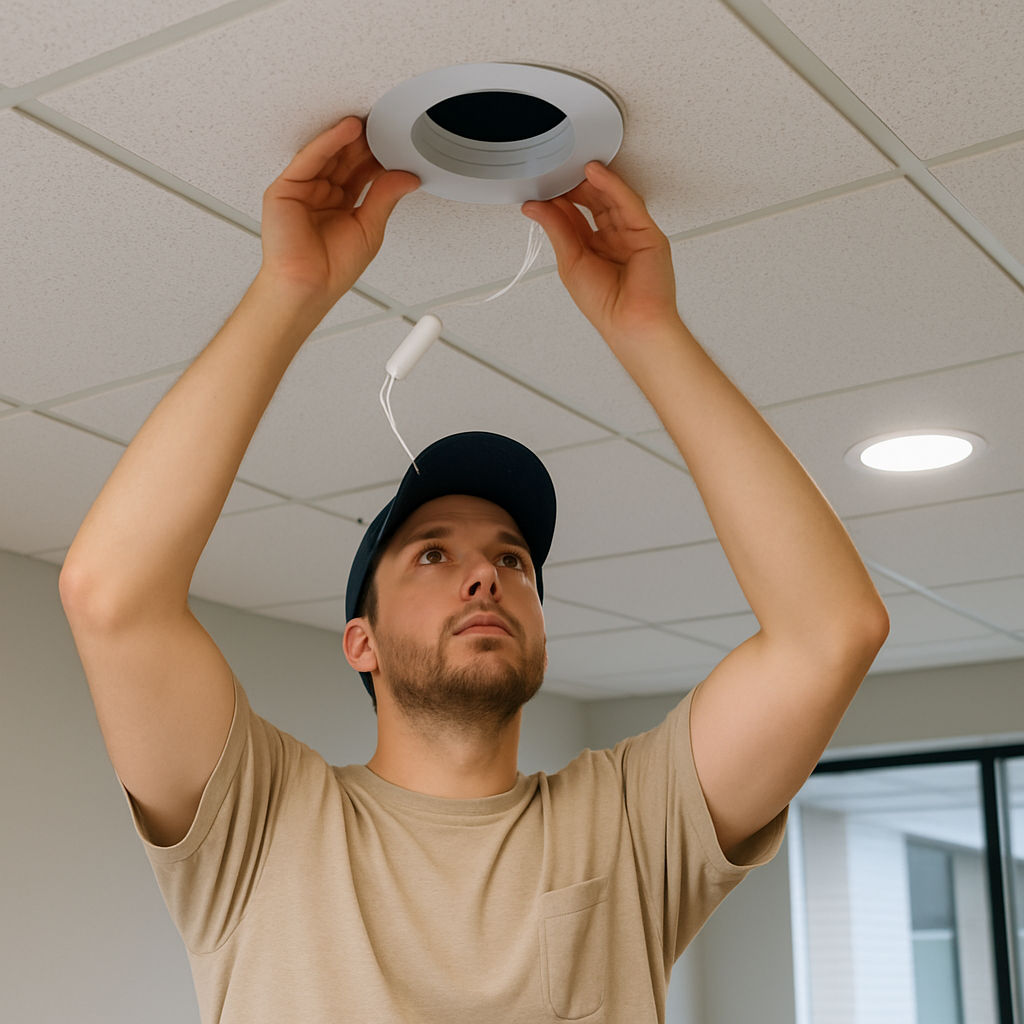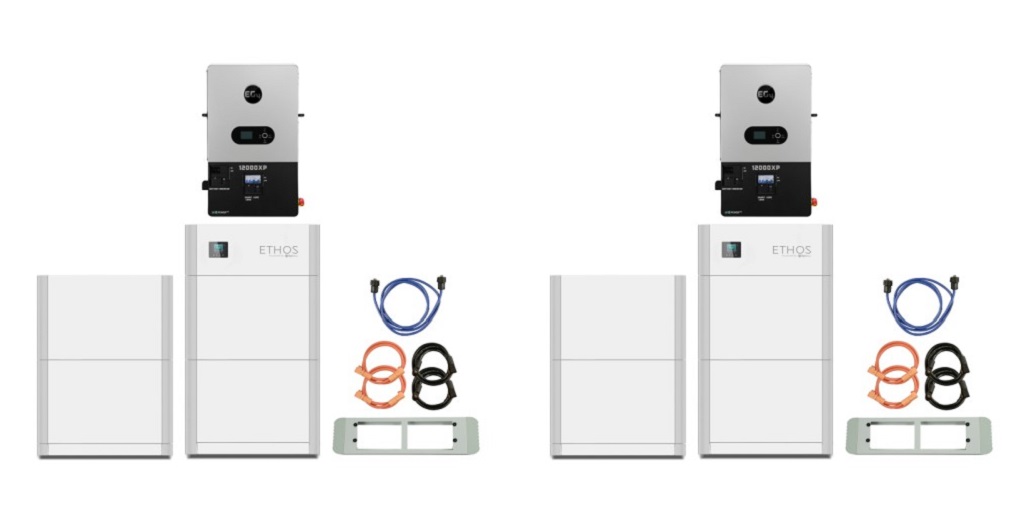In today’s world, where sustainability and eco-conscious living are becoming increasingly important, homeowners are continuously seeking ways to make their homes more environmentally friendly. One simple yet effective upgrade you can make is switching to LED recessed lighting. These energy-efficient lights not only reduce electricity bills but also contribute to a healthier planet.
LED recessed lighting, often known as LED downlights or LED ceiling lights, consists of light fixtures installed into a hollow opening in the ceiling. When fitted correctly, they appear to be part of the ceiling itself, offering a sleek and modern look. These lights are an excellent alternative to traditional incandescent or fluorescent lights due to their energy efficiency and versatility.
Benefits of LED Recessed Lighting
LED recessed lighting comes with numerous benefits that make it a popular choice for eco-conscious homeowners:
- Energy Efficiency: LED lights consume significantly less power compared to traditional lighting options. They convert more electricity into light, meaning less energy is wasted as heat.
- Longevity: LEDs have a longer lifespan, often lasting up to 25,000 hours or more. This reduces the need for frequent replacements, further saving resources and reducing waste.
- Lower Heat Output: Unlike incandescent bulbs, which release 90% of their energy as heat, LEDs emit very little heat. This makes them safer and reduces the load on air conditioning systems.
- Versatility: LED downlights come in various styles and sizes, making them suitable for different rooms and purposes. They can provide ambient, task, or accent lighting, depending on your needs.
How LED Recessed Lighting Contributes to Eco-Friendly Living
The shift towards eco-friendly home lighting solutions is crucial for reducing carbon footprints and promoting sustainable living. Here’s how LED recessed lighting plays a role in this transition:
Energy Savings
Switching to LED ceiling lights can significantly reduce your home’s energy consumption. By using less electricity, LEDs help decrease the demand on power plants, which in turn reduces the emission of greenhouse gases. Over time, the cumulative effect of using energy-efficient lighting can make a considerable difference in combating climate change.
Reduced Environmental Impact
LEDs are more environmentally friendly than traditional bulbs in several ways. They do not contain hazardous materials like mercury, which is present in compact fluorescent lamps (CFLs). Additionally, because LEDs last longer, they contribute less waste to landfills.
Cost-Effectiveness
While the initial cost of LED recessed lighting may be higher than traditional lighting options, the long-term savings are significant. The reduction in energy bills and the infrequent need for replacements mean that homeowners can quickly recoup their investment.
Improved Indoor Air Quality
LEDs produce less heat, which helps maintain a comfortable indoor temperature without over-relying on air conditioning. Moreover, because they do not burn out as frequently as incandescent bulbs, there’s less risk of releasing potentially harmful substances into the home environment.
Choosing the Right LED Recessed Lighting for Your Home
When selecting LED recessed lighting, it’s essential to consider the specific needs of each room and the overall aesthetic you wish to achieve. Here are some tips to help you make the right choice:
Determine the Purpose
Decide whether you need ambient, task, or accent lighting. Ambient lighting provides general illumination, task lighting focuses on specific areas like kitchen counters or workspaces, and accent lighting highlights particular features like artwork or architectural details.
Consider the Size and Spacing
The size and spacing of LED downlights are crucial for achieving the desired lighting effect. Larger lights are suitable for more extensive areas or higher ceilings, while smaller lights work well in compact spaces or for creating focal points. Proper spacing ensures even light distribution and prevents shadows.
Select the Right Color Temperature
LEDs come in various color temperatures, measured in Kelvin (K). Lower Kelvin values (2700K-3000K) produce a warm, cozy light, ideal for living rooms and bedrooms. Higher Kelvin values (4000K-5000K) emit a cooler, more energizing light, perfect for kitchens and workspaces.
Choose Dimmable Options
Opt for dimmable LED recessed lighting to have greater control over the ambiance of your home. Dimmable lights allow you to adjust brightness levels according to your preferences and can further enhance energy savings.
Installation Tips for LED Recessed Lighting
Installing LED recessed lighting requires careful planning and execution. Here are some tips to ensure a successful installation:
Plan the Layout
Before installation, create a detailed plan of where each light will be placed. Consider the room’s layout, furniture arrangement, and any architectural features you want to highlight.
Hire a Professional
While it’s possible to install LED recessed lighting yourself, hiring a professional electrician ensures that the job is done safely and correctly. A professional can also advise on the best placement and type of lighting for your needs.
Check Compatibility
Ensure that your home’s electrical system is compatible with the new LED lights. This may involve upgrading dimmer switches or other components to accommodate LED technology.
Follow Manufacturer Instructions
Always follow the manufacturer’s instructions for installation and maintenance to ensure the longevity and optimal performance of your LED recessed lighting.
LED recessed lighting is an excellent eco-friendly home upgrade that offers numerous benefits, including energy efficiency, cost savings, and a modern aesthetic. By choosing LED downlights from Best LEDz, you can reduce your carbon footprint, save money on energy bills, and create a comfortable, stylish living environment. As more homeowners adopt sustainable practices, LED recessed lighting from Best LEDz stands out as a practical and impactful choice for those looking to make a positive change.
Whether you’re renovating your home or simply looking to make a few upgrades, consider the role of LED recessed lighting in your journey towards a more sustainable lifestyle.


